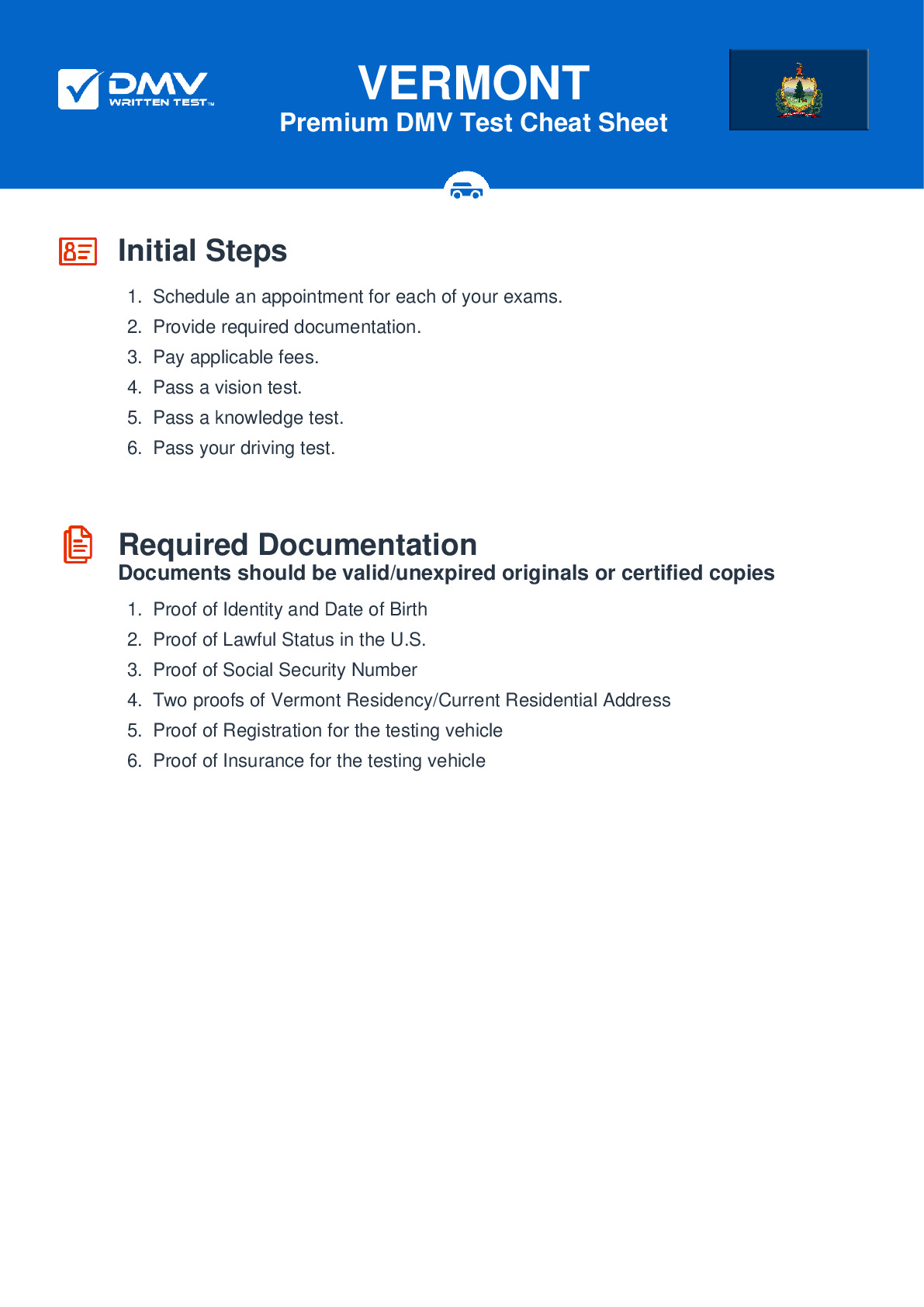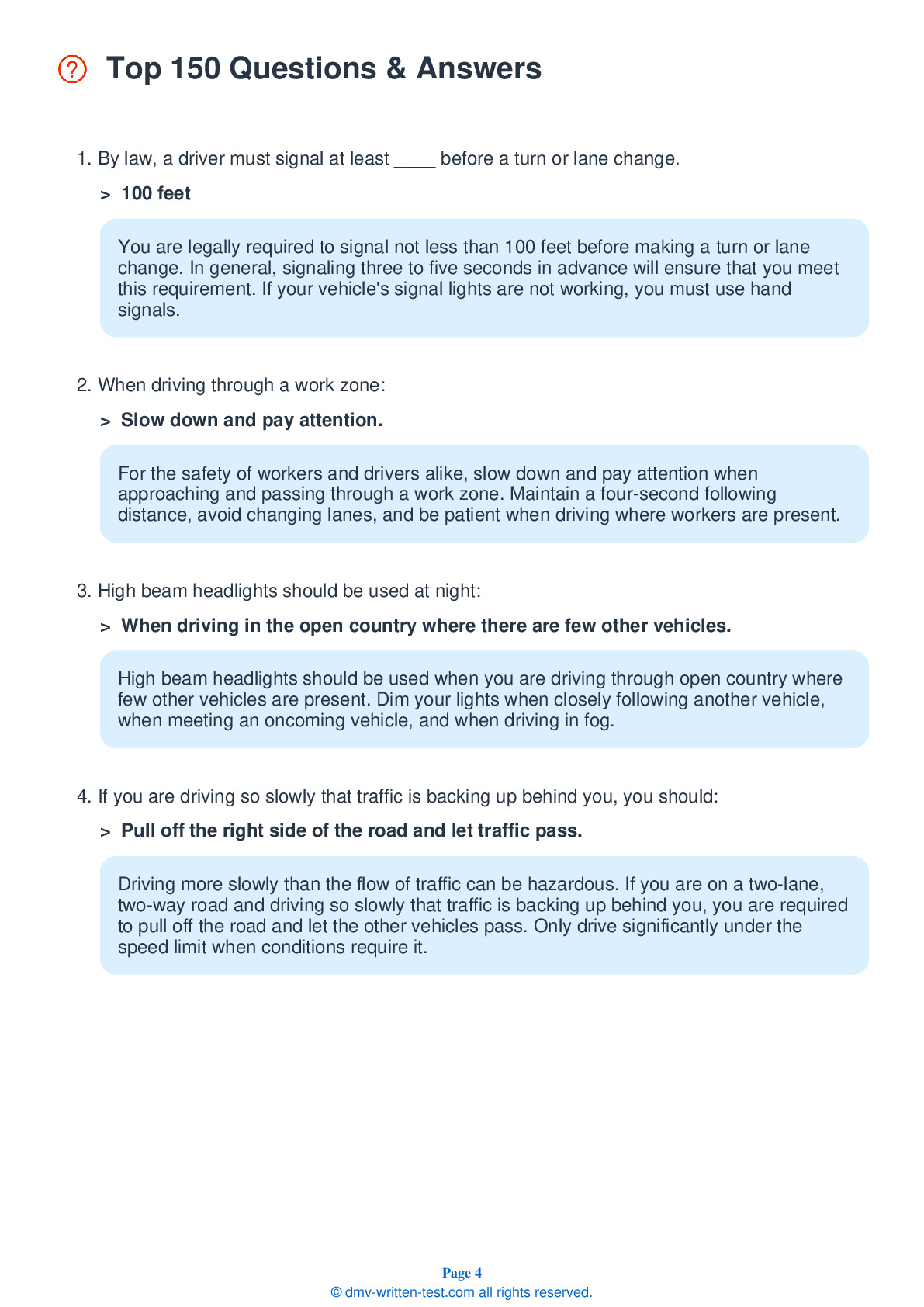2025 Vermont Permit Test 14
The following questions are from real DMV written tests. These are some of the actual permit questions you will face in Vermont. Each permit practice test question has three answer choices. Select one answer for each question and select "grade this section." You can find this button at the bottom of the drivers license quiz. For a complete list of questions and answers for Vermont please visit https://cheat-sheets.dmv-written-test.com/en/vermont/car.
Number of Tests
Number of Question
Passing Score
14. When changing lanes you should not:
Explanation
Before changing lanes, check your side and rearview mirrors for traffic approaching you from behind. Use your turn signal to let other drivers know you plan to change lanes. Check for other drivers who also may be moving into the same lane.
15. What may help drivers conserve gasoline?
Explanation
Every time you have to stop quickly, it takes time and fuel to accelerate and get your vehicle back up to the speed of traffic. Drivers who look far ahead of their vehicles can slow down gradually or change lanes to avoid unnecessary braking, leading to better gas mileage.
16. A good defensive driver:
Explanation
Even the most experienced drivers can be distracted while driving. A defensive driver looks out for the actions of other drivers and anticipates potential problems.
17. When in a travel lane on the roadway:
Explanation
You should not stop in a travel lane for any reason. Instead, keep moving until you can safely pull off of the road. If you miss your turn or exit, do not back up. Go to the next turn or exit or where you can safely turn around.
18. When two vehicles arrive to an intersection at the same time, which one has the right-of-way when no signs or signals indicate rules?
Explanation
At an intersection of two similar roads without a traffic control device, a driver must yield to a vehicle approaching from the right.
19. Driving at night requires increased caution because:
Explanation
Because it is dark, drivers cannot see as well at night as they can during the day. From one half hour after sunset until one half hour before sunrise, or at any other time when persons or vehicles are not visible for 500 feet, drivers must use their headlights.
20. When you see this sign, you must:

Explanation




